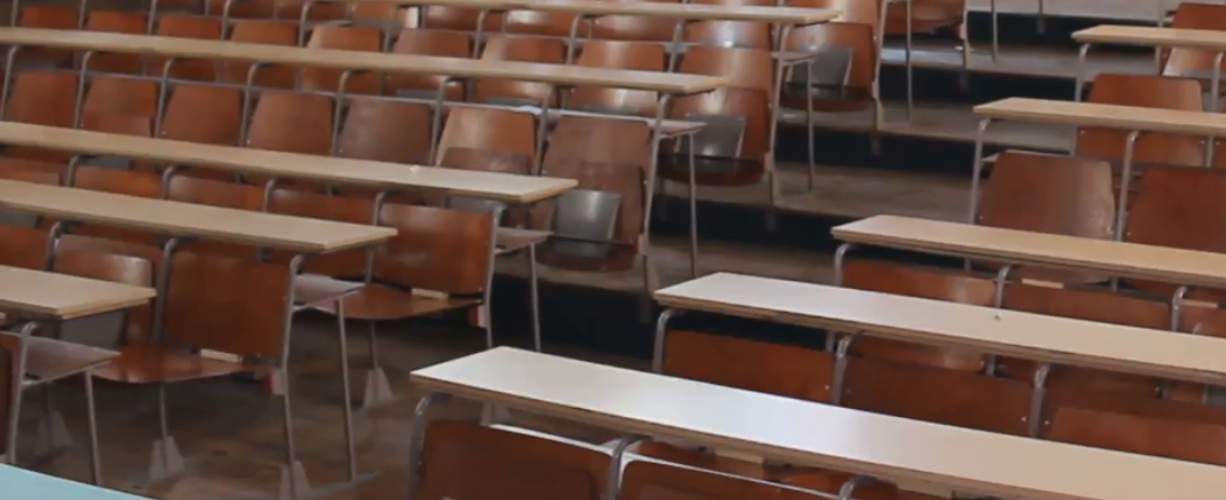Clayton Christensen of the Harvard Business School predicts that half of America’s colleges will die during the coming decade, due especially to competition from online coursework.
Many will pooh-pooh this dire forecast for institutions that have been so cherished a part of the nation’s culture. But Gettysburg College historian Allen Guelzo contended that the danger is palpable, and increasing, in a recent Wall Street Journal piece (behind a pay wall).
Guelzo said America’s 1,800 private colleges are especially at risk, and the smaller they are the bigger their problem. Though elite private schools boast fat endowments, offer ample scholarship aid and lure plenty of applicants, hundreds of private campuses lack these advantages.
Schools in the Northeast are especially vulnerable. In the past six years, 17 small colleges died in Massachusetts alone, and in recent months three more in New England announced closures. The ghost of Vermont’s debt-ridden Burlington College, which went under in 2016, remains in the news because financial moves by its former head, Jane Sanders, got the blame and she’s married to a would-be U.S. president.
Parents and students may protest tuition increases that exceed inflation year by year, conservatives may bemoan faculties dominated by politically correct liberals and some pundits may question the value of a college degree.
But Guelzo said the big threat is simple demographics. He projects that sagging birth rates will reduce potential college applicants by 450,000 during the 2020s. Private colleges must charge much higher tuitions than tax-supported competitors and will be hammered further if Democrats achieve “free college for all” plans that subsidize public campuses.

Obviously a big story is brewing, and religion writers will want to focus on the 247 Catholic colleges listed by the U.S. bishops’ office and the 143 conservative Protestant campuses linked to the Council for Christian Colleges & Universities. Most are four-year liberal arts institutions, but the counts include some seminaries and other specialized programs. Myriad other schools founded by “mainline” Protestants have only vestigial faith commitments and are of less religious interest.
Educational experts say that to defy the odds and maintain enrollments, small colleges need specialized academic programs to become distinctive in today’s academic marketplace. That brings us to a New York Times article (behind pay wall) that reported prospects have brightened for two unique categories formerly in decline — historically black and women-only colleges.
Black campuses seemed on borrowed time as schools integrated and welcomed students of all races. Yet The Guy remembers a nationally prominent black clergyman telling him how thrilled he was when his daughter got into elite Duke. But she was uncomfortable in that elite predominately white environment and became far happier after transferring to Xavier of New Orleans.
Between 2014 and 2017, black colleges’ freshman total increased from 36,000 to 41,000, and applications rose about 20 percent. Similarly, the expansion of coeducation meant women’s colleges numbered 64 in 2000 and only 38 currently, but first-year students increased from 9,000 in 2014 to 13,000 in 2017. It’s probable these trends will continue due to the racial tensions in the Donald Trump years, and young women’s concern about #MeToo abuse on campus.
Reporters should research comparable trends among small religious colleges. The Guy suspects they’ll find no current upswing and dimming futures.
Do experts think the numbers for black and women’s colleges are telling churches and educators that the more distinctively religious a religious college is, the better its odds of survival? One source on all this would be Nebraska’s Ben Sasse, who before election to the U.S. Senate was the president who helped stabilize Lutheran-related Midland University.
Here’s another intriguing angle. Writing in the conservative National Review, Graham Hillard of Trevecca Nazarene University proposed the following. With the ideologically monolithic faculties in U.S. higher education, schools like his own, while committed to particular religious principles, may offer more diverse socio-political discussions than the typical secular campus (see this tmatt post on a related subject in The Atlantic).
This needs some good reporting, but The Religion Guy suspects he’s right.










